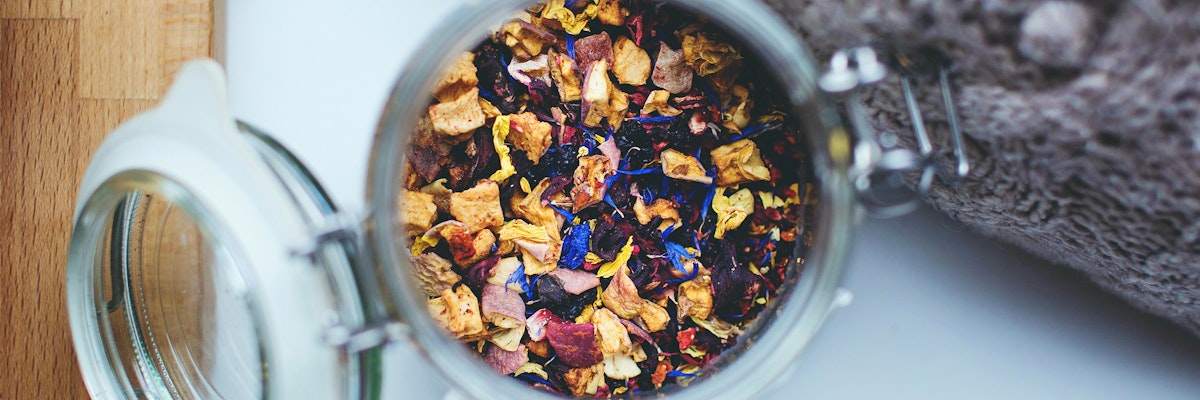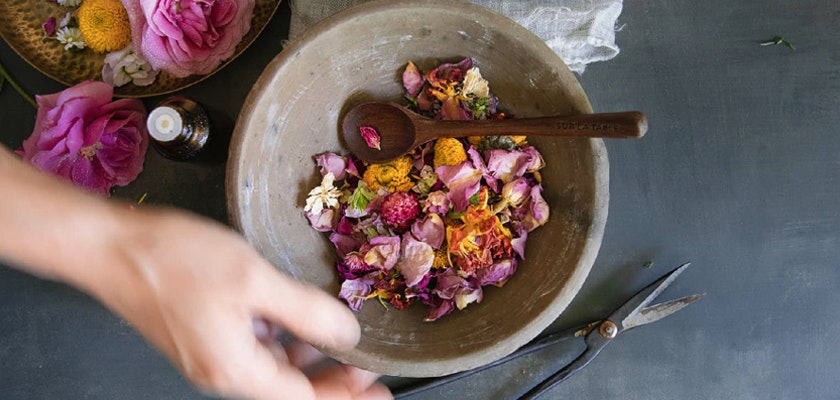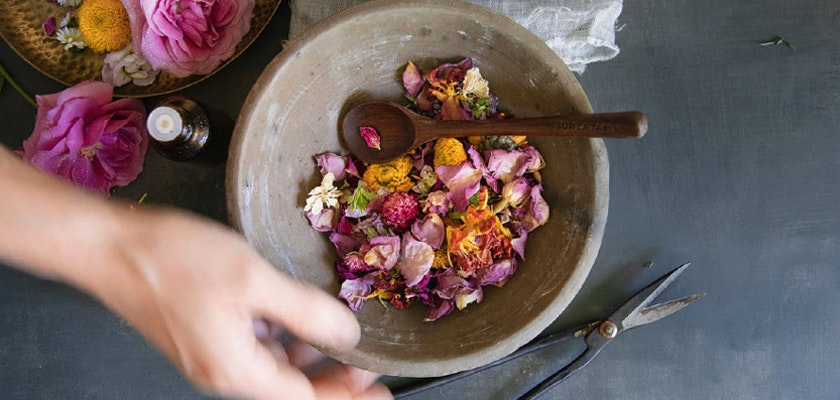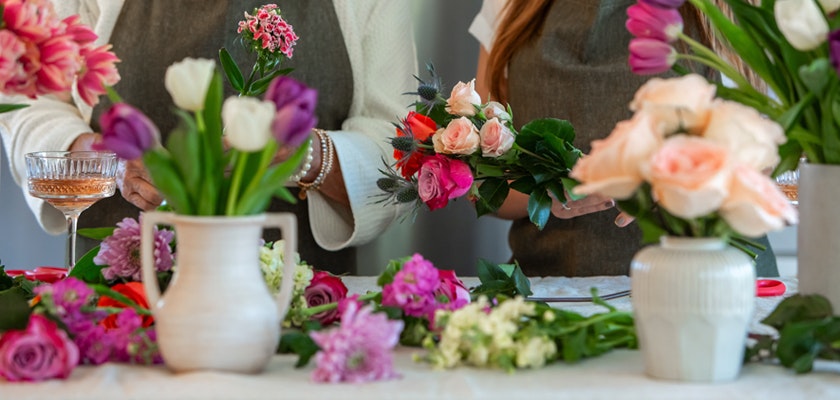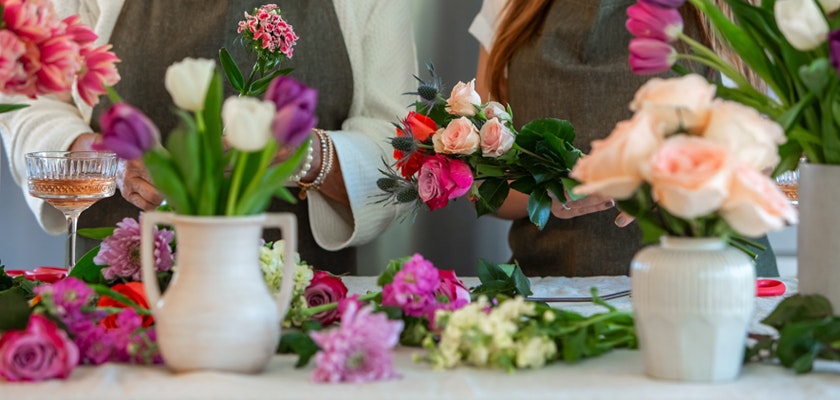Creative Ways to Repurpose Dead Flowers and Plants with BloomsyBox
In the cycle of life, everything has its season, and this holds true even in the world of flora. At BloomsyBox, we see the end of a bloom not as waste but as an opportunity for creativity and sustainability.
Reuse Dead Flowers: Innovative Ideas
Repurposing dead flowers and plants is a beautiful way to honor their beauty and utility long after their prime. It’s an approach that aligns with our ethos of environmental responsibility and innovative gardening. By finding new life for expired blooms, we can enrich our lives and homes in unique ways, reduce waste, and contribute to a healthier planet. Whether it’s crafting, composting, or creating natural dyes, there are myriad ways to transform what many consider refuse into resources.
1. Create Potpourri
Creating potpourri from dead flowers is a classic and elegant way to preserve their beauty. This process involves drying the petals and combining them with other aromatic ingredients like spices, herbs, and essential oils. The result is a fragrant mixture that can refresh any room with natural scents. Potpourri allows you to customize blends to evoke specific moods or memories, turning your bouquet into a sensory keepsake. Beyond its aromatic appeal, crafting potpourri also offers a moment to engage in the artful process of selecting and combining materials, making each batch unique to its creator.
The act of creating potpourri is both meditative and eco-friendly. It encourages a connection to the natural elements in your home and promotes a sustainable lifestyle. Displayed in decorative bowls or sheer fabric bags, potpourri serves as a visual and olfactory reminder of special moments or loved ones. It stands as a testament to the enduring beauty of flowers, providing joy and comfort beyond their blooming period.
Furthermore, potpourri making is an accessible craft that invites participation from all ages. It's a fantastic way to introduce children to the concepts of recycling and creativity, showing them how beauty can be found and preserved in unexpected places. With each blend, we're reminded of nature's cycles and our role in stewarding the environment thoughtfully.
2. Pressed Flower Art
Pressed flower art is a delicate and timeless way to repurpose dead blooms. This craft involves pressing flowers to remove moisture and then using them to create intricate designs on paper, fabric, or other mediums. The results can range from simple bookmarks to complex framed art pieces, all showcasing the unique beauty of each flower. Pressed flower art not only preserves the blooms but also captures a moment in time, making it a thoughtful and personal gift or keepsake.
This art form requires patience and precision but is ultimately rewarding, offering a tangible connection to the natural world. Engaging in this craft can provide a therapeutic outlet, allowing for creative expression while fostering an appreciation for the details and diversity of plant life. Pressed flower projects can also be an educational tool, introducing botanical concepts and encouraging observation skills.
Incorporating pressed flowers into everyday items like stationary, candles, or phone cases adds a touch of nature to our lives. It’s a reminder of the impermanence of beauty and the importance of cherishing the moment. Through pressed flower art, BloomsyBox encourages everyone to see the potential in what might seem like the end of a lifecycle, turning it into an opportunity for renewal and creativity.
3. Natural Dyes
Natural dyes made from dead flowers offer a sustainable and creative alternative to synthetic colors. This ancient practice involves simmering expired blooms to extract pigments, which can then be used to dye fabric, paper, or yarn. Each flower type yields a unique hue, allowing for endless experimentation and discovery. This method not only gives new purpose to dead flowers but also connects us to historical textile traditions, emphasizing the continuity between past and present crafting techniques.
Utilizing natural dyes is an excellent way to introduce eco-consciousness into arts and crafts. It provides an opportunity to learn about the properties of different plants and how they can be harnessed for artistic endeavors. Additionally, it challenges us to think differently about resources and waste, inspiring a closer relationship with the materials we use daily.
The process of creating and using natural dyes can be incredibly satisfying, offering a hands-on experience that fosters a deeper appreciation for the nuances of color and the natural world. It’s a practice that marries science and art, encouraging experimentation and a mindful approach to crafting. BloomsyBox champions this inventive reuse of flowers delivery, showcasing how traditional techniques can be revitalized in modern contexts.
4. Composting
Composting dead flowers and plants is a straightforward yet impactful way to contribute to the health of your garden. This process recycles organic material, turning it into rich soil that can nourish new growth. Composting helps close the loop in the garden ecosystem, reducing waste and promoting sustainability. It’s a practice that underscores the interconnectedness of all living things and the role we can play in supporting the natural cycle of growth and decay.
Incorporating composting into your gardening routine is not only good for the environment but also beneficial for your plants, providing them with the nutrients they need to thrive. It’s an act of stewardship towards the earth, demonstrating respect and care for the soil that sustains us. By composting, we acknowledge the value of all plant matter, recognizing that even in death, flowers and plants continue to give back to the ecosystem.
The simplicity of composting makes it accessible to gardeners of all levels. It encourages a mindful approach to waste and resource management, prompting us to consider how our actions impact the larger environmental system. BloomsyBox advocates for composting as a key element of sustainable gardening, inviting everyone to participate in this nurturing and regenerative practice.
5. Homemade Beauty Products
Dead flowers can find a second life in homemade beauty products, infusing these creations with natural fragrance and beneficial properties. For instance, lavender’s calming effects or rose’s anti-inflammatory qualities can enhance soaps, bath bombs, and facial tonics. This DIY approach allows for customization of beauty treatments, tailoring them to specific needs and preferences while ensuring the use of natural, gentle ingredients.
Crafting beauty products from dead flowers not only reduces waste but also connects us to the tradition of using plants for self-care. It’s a practice that honors the inherent value of every part of the plant, celebrating the diverse ways nature supports our wellbeing. These homemade concoctions can serve as thoughtful, personalized gifts, spreading the joy of natural beauty further.
Engaging in the creation of homemade beauty products encourages a deeper understanding of the ingredients we use on our bodies and their sources. It fosters a greater appreciation for simplicity and sustainability in self-care routines, aligning with BloomsyBox’s ethos of mindful living and environmental responsibility.
6. Educational Tools
Utilizing dead flowers as educational tools opens up avenues for learning and discovery, especially for young minds. They can be employed to teach about plant biology, the life cycle of flowers, or even art and color theory. This hands-on approach to education engages children in active learning, fostering curiosity and a sense of wonder about the natural world.
Through activities such as dissecting flowers to understand their parts or using them in science experiments to explore concepts like capillary action, children gain valuable knowledge. These experiences encourage observation and inquiry, foundational skills in scientific thinking. BloomsyBox supports using dead flowers as educational tools, highlighting the importance of experiential learning in fostering environmental stewardship from a young age.
In addition to scientific exploration, dead flowers can inspire artistic projects, from botanical drawing to DIY crafts, integrating art into the learning process. This holistic approach to education reinforces the idea that beauty and learning can be found in every stage of life, encouraging a lifelong appreciation for nature and creativity.
7. Scented Sachets
Scented sachets crafted from dried flowers provide a delightful way to keep spaces smelling fresh and inviting. These small pouches can be tucked into drawers, closets, or even cars, releasing subtle natural fragrances. Creating these sachets is a simple and enjoyable project, offering the pleasure of blending different floral scents to achieve the desired aroma.
Beyond their practical use, scented sachets serve as charming, handmade gifts that convey thoughtfulness and care. They represent a creative reuse of resources, turning dead flowers into something both beautiful and useful. BloomsyBox encourages the creation of scented sachets as a way to extend the life of flowers, sharing their beauty in new and unexpected ways.
The process of making scented sachets allows for customization and experimentation, blending aesthetics with functionality. It's a testament to the versatility of flowers, showcasing how their appeal can be preserved and enjoyed long after their prime. Through projects like these, we're reminded of the endless possibilities for repurposing and appreciating the natural bounty around us.
8. Decorative Mulch
Using dead flowers and plants as decorative mulch not only enhances the visual appeal of garden beds but also contributes to soil health. This approach to mulch adds a layer of organic material to the soil surface, helping to retain moisture, regulate temperature, and suppress weeds. It’s a practical and aesthetically pleasing way to utilize expired blooms, embodying the principles of beauty and functionality.
Decorative mulch made from flowers introduces a pop of color and texture to landscaping, offering a unique alternative to traditional mulching materials. It reflects BloomsyBox’s belief in the beauty of recycling and the potential for every part of the plant to enrich our environment. This practice encourages gardeners to view their spaces as ecosystems where every component, regardless of its stage in life, plays a crucial role.
Furthermore, using dead plants as mulch fosters a closed-loop system in gardening, minimizing waste and maximizing resources. It’s a tangible expression of sustainable gardening practices, promoting soil health and plant vitality. Incorporating decorative mulch into garden design not only serves a functional purpose but also enhances the connection between aesthetics and ecology. By reimagining the role of dead flowers in the garden, BloomsyBox advocates for a holistic approach to gardening, where beauty and sustainability coexist harmoniously.
The cycle of life in the plant world offers more than just the visual pleasure of blooms at their peak; it presents a myriad of opportunities for creativity, sustainability, and learning. BloomsyBox's dedication to repurposing dead flowers and plants embodies our commitment to environmental stewardship and innovative gardening practices. By exploring the various ways to give new life to expired blooms, we not only honor their inherent beauty but also contribute to a more sustainable and mindful way of living. These creative endeavors, from crafting potpourri and pressed flower art to making natural dyes and decorative mulch, highlight the endless possibilities for integrating nature into our lives, even beyond the life of a flower.
Each method of repurposing speaks to a deeper understanding of nature’s cycles and our role within them. Whether it’s through enhancing our gardens with compost and mulch, beautifying our homes with art and sachets, or enriching our learning with educational tools, the potential to transform what was once considered waste into something valuable is immense. BloomsyBox champions these practices not just for their environmental benefits but for the joy and fulfillment they bring to the gardening experience.
Furthermore, engaging in these activities strengthens our connection to the natural world, fostering a sense of responsibility and care for the environment. It encourages us to view our gardens not merely as spaces of transient beauty but as ecosystems where every element has value and purpose. Through such endeavors, BloomsyBox hopes to inspire a community of gardeners who are not only passionate about plants but also committed to the principles of sustainability and creativity.
Ultimately, the lessons learned from repurposing dead flowers extend far beyond gardening. They teach us about resilience, resourcefulness, and the beauty of transformation. In a world that often emphasizes the new and discards the old, finding purpose and value in the remains of our gardens serves as a poignant reminder of the cycles of life and the importance of mindfulness in our consumption and waste. BloomsyBox invites everyone to join in this journey of discovery and innovation, celebrating the beauty and potential of every stage of plant life, proving that with a bit of creativity, the end can indeed be just another beginning.
